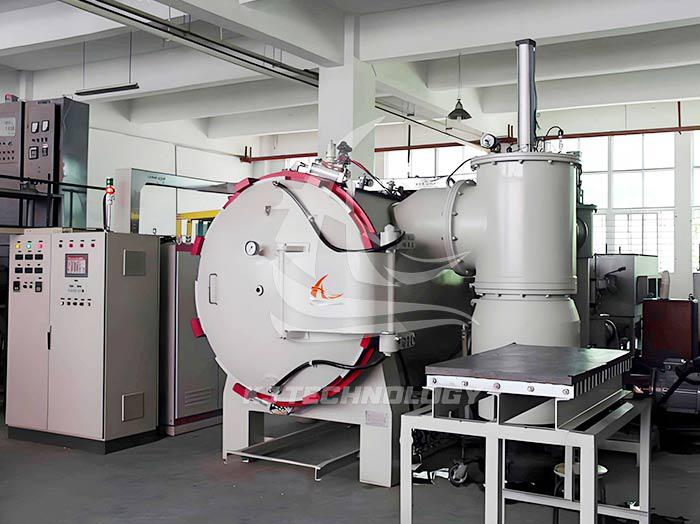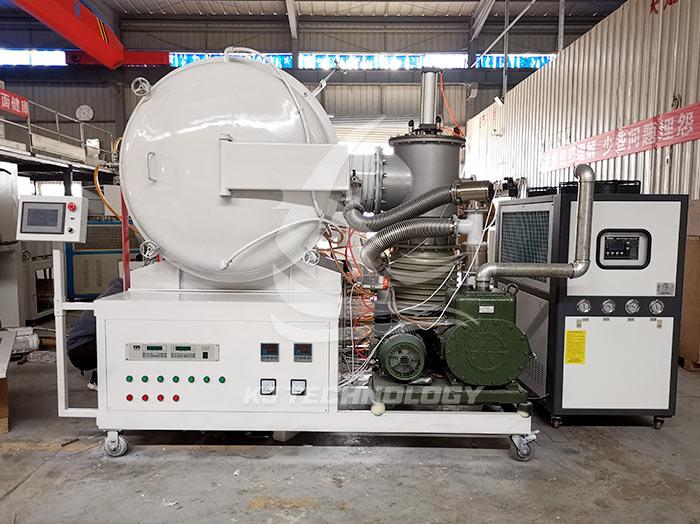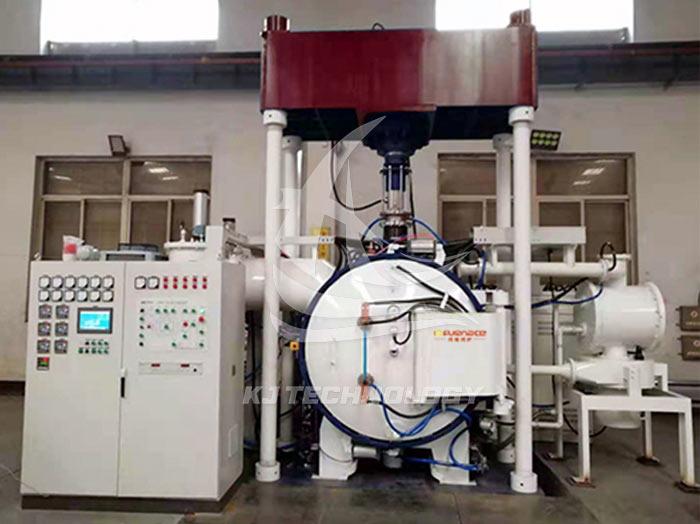Vacuum furnace workpiece annealing
 10-10-2025 Author: KJ technology
10-10-2025 Author: KJ technology
When annealing workpieces in a vacuum furnace, special attention should be paid to equipment characteristics, process parameter control, safety operation standards, and processing requirements for different materials. Specific precautions are as follows:
1. Equipment characteristics and preparation
Equipment inspection and preheating:
Vacuum furnaces that are used for the first time or have been out of service for a long time should be baked at around 120 ℃ for 1 hour and around 300 ℃ for 2 hours to prevent furnace cracking.
Check if the vacuum system, heating system, cooling system, control system, etc. are working properly to ensure no leaks or malfunctions.
Check if the interior of the furnace is clean and free of residue or impurities.
Workpiece preparation:
Select appropriate furnace fixtures based on the shape and size of the workpiece, arrange the workpiece reasonably, ensure uniform heating, and avoid deformation caused by collision.
Before loading the workpiece into the furnace, it needs to be cleaned to remove impurities such as oil stains and oxide scales, in order to avoid contaminating the vacuum environment and affecting the annealing quality.
2. Process parameter control
Vacuum pumping and inflation:
Before starting the vacuum pump, check the sealing of the system to ensure there are no leaks. Vacuum pumping should be carried out in stages to avoid oil vapor diffusion caused by excessive pumping speed.
Observe the changes in the readings of the vacuum gauge, determine whether the vacuum degree inside the furnace meets the standard, and if necessary, perform leak detection treatment. For rare metal pipes such as titanium, it is necessary to strictly control the vacuum degree to prevent damage to the quality of the pipes.
When inflating and cooling, it is necessary to choose a suitable protective gas and control the inflation pressure and flow rate to avoid damage to the workpiece caused by sudden restoration of normal pressure.
Heating and insulation:
The heating process must be strictly executed according to the process curve to avoid excessive temperature fluctuations that may affect material properties. By observing the temperature curve changes, adjust the heating power in a timely manner to ensure temperature uniformity.
Maintain vacuum stability during the insulation stage to prevent external gases from entering and affecting the annealing effect. The insulation time needs to be precisely controlled according to the material type and annealing requirements.
Cooling:
Select appropriate cooling methods based on material characteristics, such as air cooling, oil cooling, etc. Attention should be paid to the risk of workpiece deformation during cooling in a vacuum environment, and auxiliary support measures should be taken if necessary.
The cooling rate should be controlled within a reasonable range to avoid excessive thermal stress that may cause material cracking.
3. Safety operation standards
Personal protection:
Operators are required to wear protective goggles, heat-resistant gloves, and protective clothing to prevent accidental contact with high-temperature components or oil vapor splashes.
During the operation, it is necessary to remain vigilant and pay attention to observing the operating status of the equipment and changes in the surrounding environment.
Equipment safety:
Regularly check whether the electrical circuits are intact and whether the grounding is reliable. It is forbidden to touch live parts during equipment operation. During maintenance, the power supply must be cut off and a warning sign must be hung.
Regularly test the leakage protection device to ensure its sensitivity and reliability. Maintain a safe distance during equipment operation to avoid burns.
Before repairing the vacuum system, it is necessary to confirm the pressure relief to avoid residual pressure causing injury.
Environmental safety:
The vacuum furnace should be installed in an environment with good ventilation and no flammable or explosive materials. During the operation, it is necessary to keep the environment clean and avoid the accumulation of debris.
For pollutants such as exhaust gas and wastewater generated, they need to be treated and discharged in accordance with environmental protection requirements.
4. Processing requirements for different materials
Metallic materials:
For metal materials such as steel, aluminum alloys, and titanium alloys, vacuum annealing can be used to improve the microstructure of the metal, enhance its strength, hardness, corrosion resistance, and other properties.
The annealing temperature and holding time need to be precisely controlled according to the material type and annealing requirements to avoid overheating or overburning of the material.
Semiconductor materials:
Semiconductor materials have extremely high requirements for purity and crystal structure. Vacuum annealing furnace can be used in the semiconductor chip manufacturing process to eliminate crystal defects and improve electrical performance.
During the annealing process, it is necessary to strictly control the vacuum degree and temperature uniformity to ensure the reliability and stability of the chip.
Ceramic materials:
Ceramic materials need to prevent cracking and deformation during vacuum annealing. The annealing temperature and holding time need to be precisely controlled according to the type and performance requirements of the ceramic material.
For volatile ceramic materials, special protective measures should be taken, such as using a protective atmosphere or coating a protective layer.








